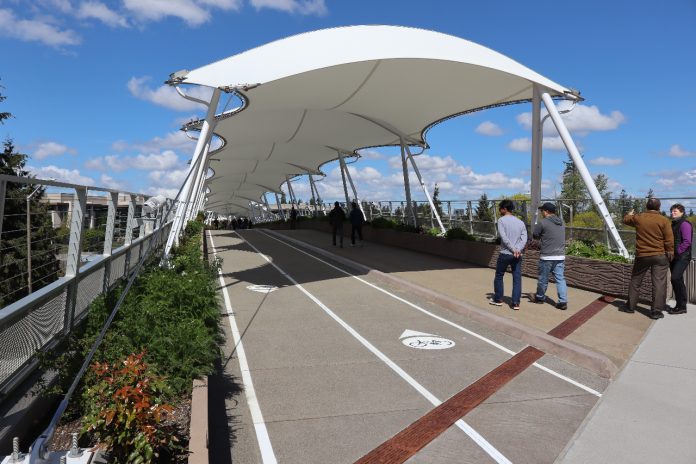
The City of Redmond, Microsoft, and Sound Transit cut the ribbon Monday on a highway-straddling pedestrian and bike bridge connecting the new Redmond Technology light rail station directly across both State Route 520 and local streets in Redmond. The bridge, funded entirely by Microsoft by way of a public-private partnership authorized under state law, has been in the works for more than 10 years. With the start of service on Sound Transit’s 2 Line this Saturday, the bridge provides a multimodal connection at the line’s northern terminus until service is extended into Downtown Redmond in 2025.
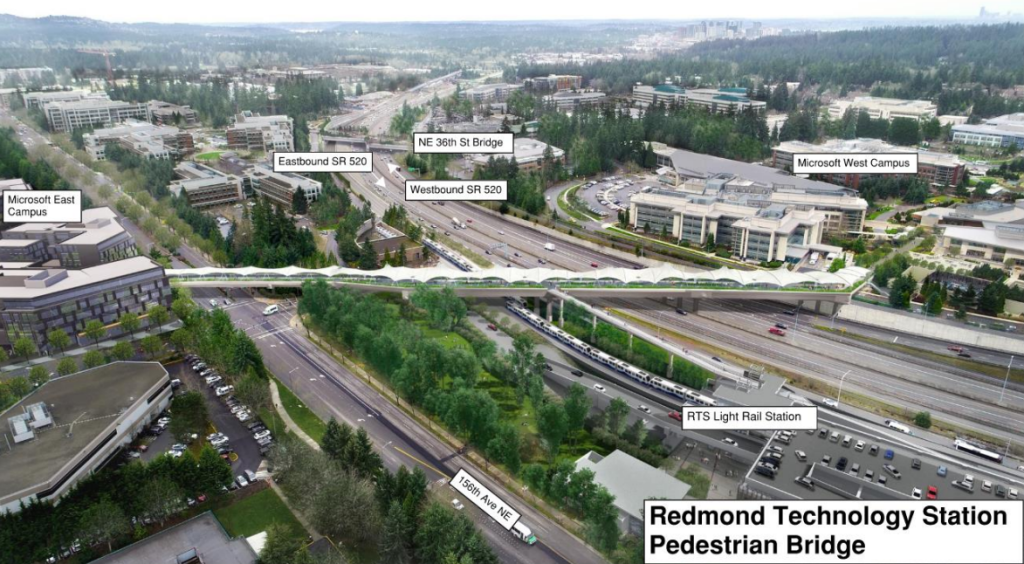

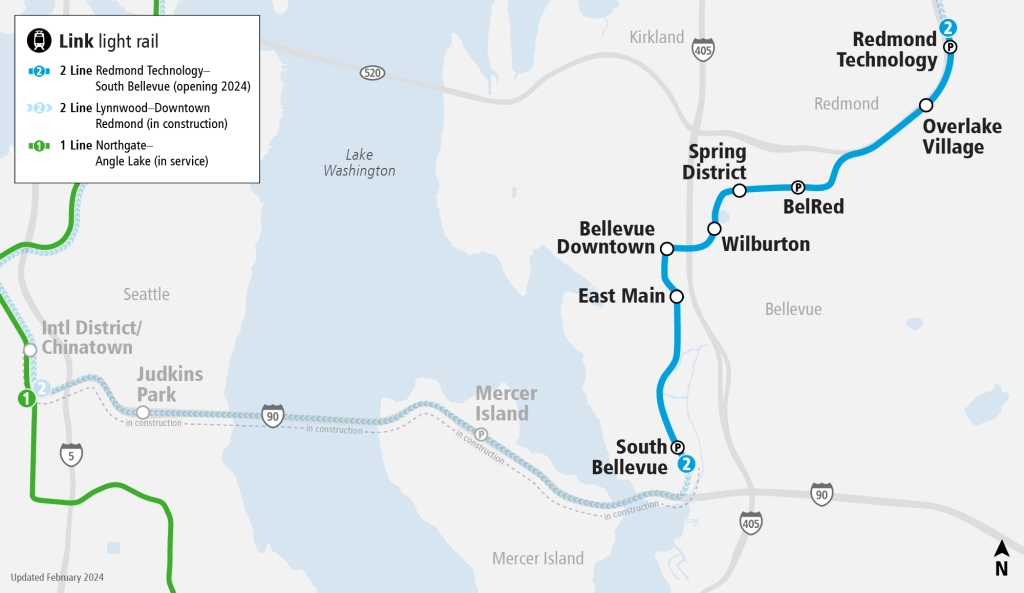
The new 1,100-foot bridge provides a covered connection between the SR 520 multi-use trail on the west side of the state highway and the light rail station, parking garage and bus station, but also over NE 156th Street in Redmond, linking the east and west halves of Microsoft’s 500-acre campus. The bridge includes separate walking and biking areas, public seating along the span, and significant amounts of greenery.
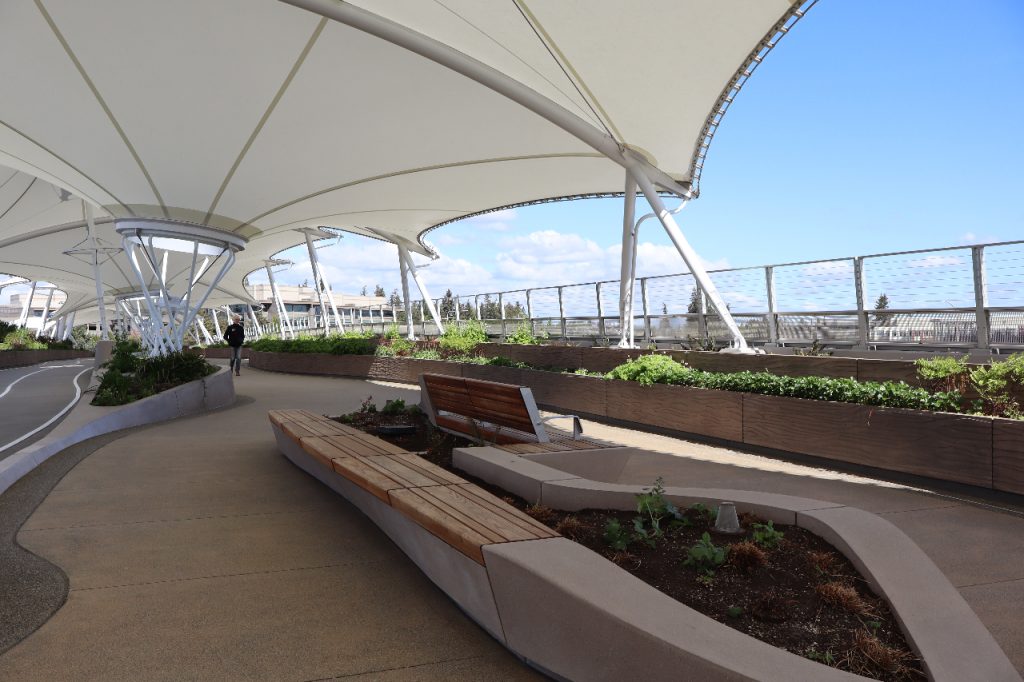
Microsoft’s financial contribution, enabled through Redmond’s community facilities district, totaled $33.3 million and also included nearby streetscape improvements. The company oversaw the design of the project, with Kiewit Engineering Group, the same firm that worked on the 2 Line, completing the engineering work and AECOM handling the design. Now the bridge will be owned by the City of Redmond, with Microsoft helping with some of the maintenance costs, including upkeep on the custom-made white canopy.
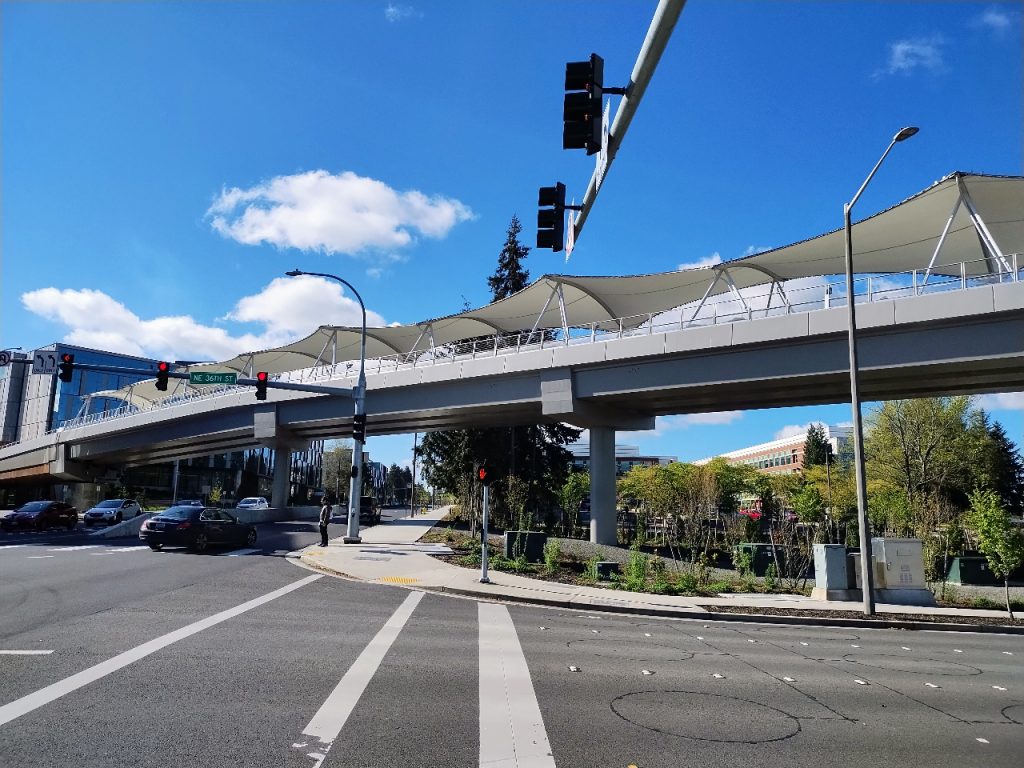
King County Executive and Sound Transit board chair Dow Constantine was front and center at the ribbon holding line.
“Events like today’s really do demonstrate how this region can unite, unite time and again and move forward on shared priorities: mobility, connection, safety, environmental stewardship,” Constantine said. “And on Earth Day, it’s appropriate to highlight the connection this bridge will give bikers and pedestrians to the 520 bike trail and make it even easier for people to get where they need to go without having to haul and park 4,000 pounds of plastic and steel with them.”
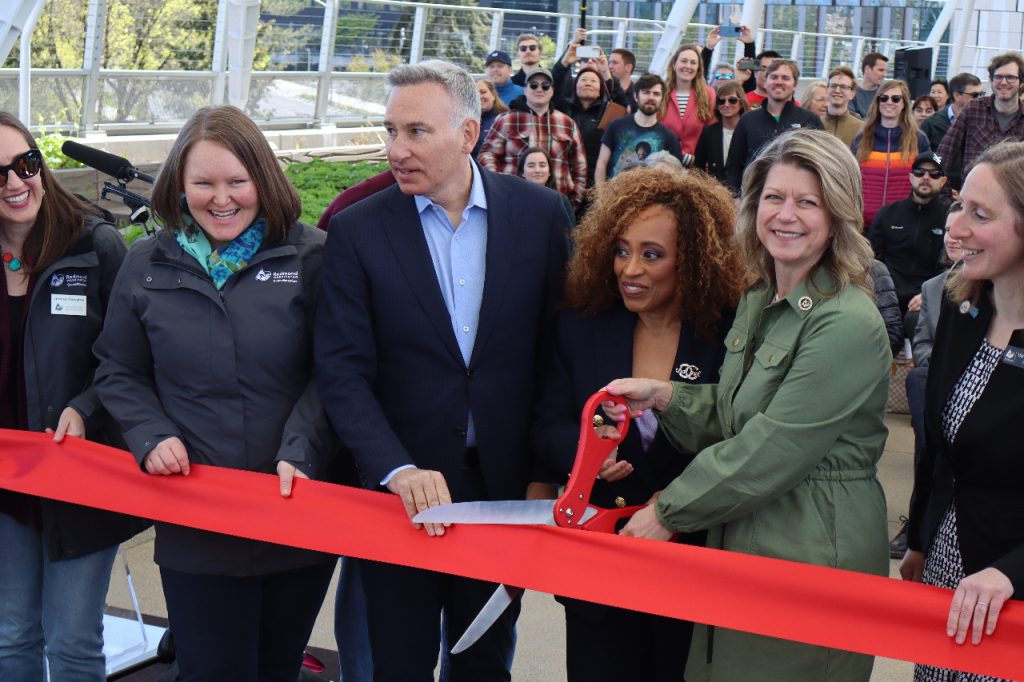
In her remarks before the ribbon-cutting, King County Councilmember Claudia Balducci noted the importance of improving bike and pedestrian connections to current and impending light rail stations.
“That powerful high capacity transit connection only works when we’ve provided connections from the stations to all the places people want to go, and this bridge is just a high and fantastic example of what a connection can and will and should be,” Balducci said. “It’s truly an amazing accomplishment and it’s going to be so useful to so many people. It’s also a connection in the sense that travelling by transit, by bus, by bike, or on foot, is a much more socially connected way of getting around […] This bridge is going to make people happy.”
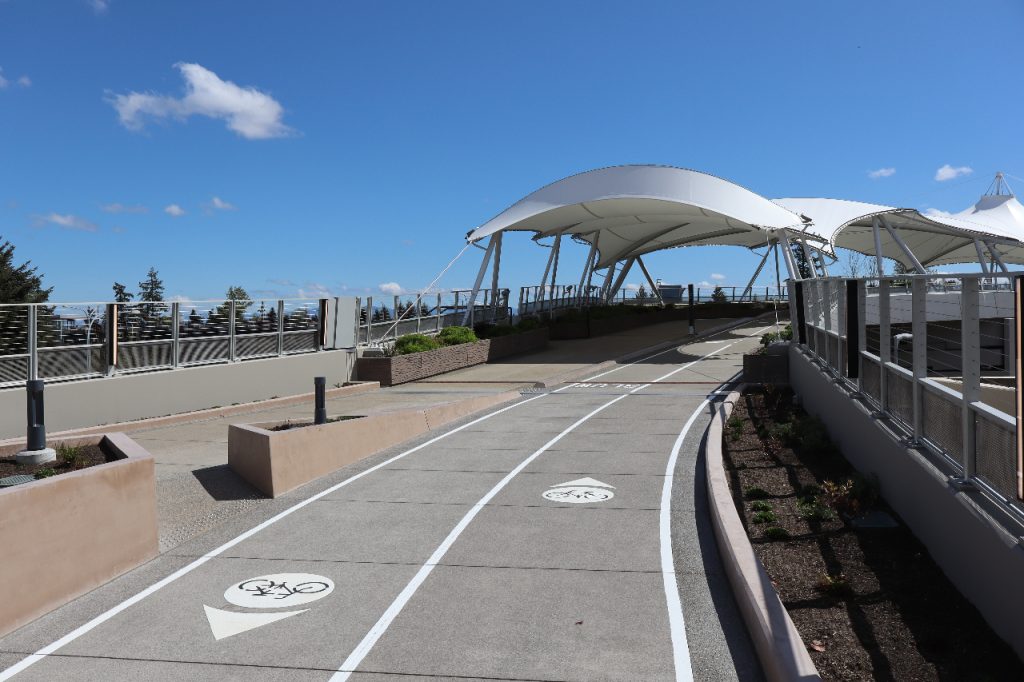
“I would say this bridge is a really great example of design for bike and pedestrian spaces,” Kelli Refer, the executive director of Move Redmond, told The Urbanist. “There’s plenty of space for two-way biking, and there’s lots of space for walking. And I also really appreciate that there’s seating along the bridge. It’s a pretty long bridge, and so for folks who might have different mobility issues, having the opportunity to pause and take a rest is really vital. And in addition to that the coverage is nice. I think folks who bike year round in the Pacific Northwest don’t expect to be dry, but it’s really nice to have a dry space to stop and hang out. And the native landscaping is lovely, quite beautiful.”
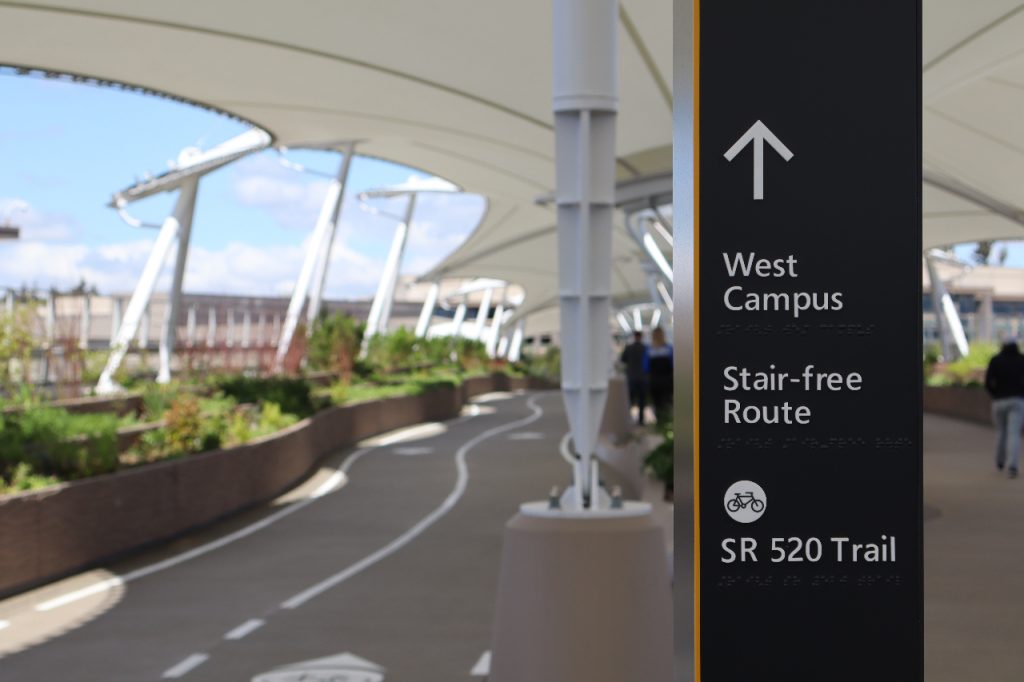
Bike riders who fully cross the new bridge from the 520 Trail will find a new, Microsoft-funded two-way cycletrack on NE 156th Street, a facility that the City of Redmond is currently working to extend north to NE 40th Street and down to the Bellevue city limits at NE Turing Street, in the fast-growing Overlake Village neighborhood, stitching together elements of the city’s growing on-street bike network.
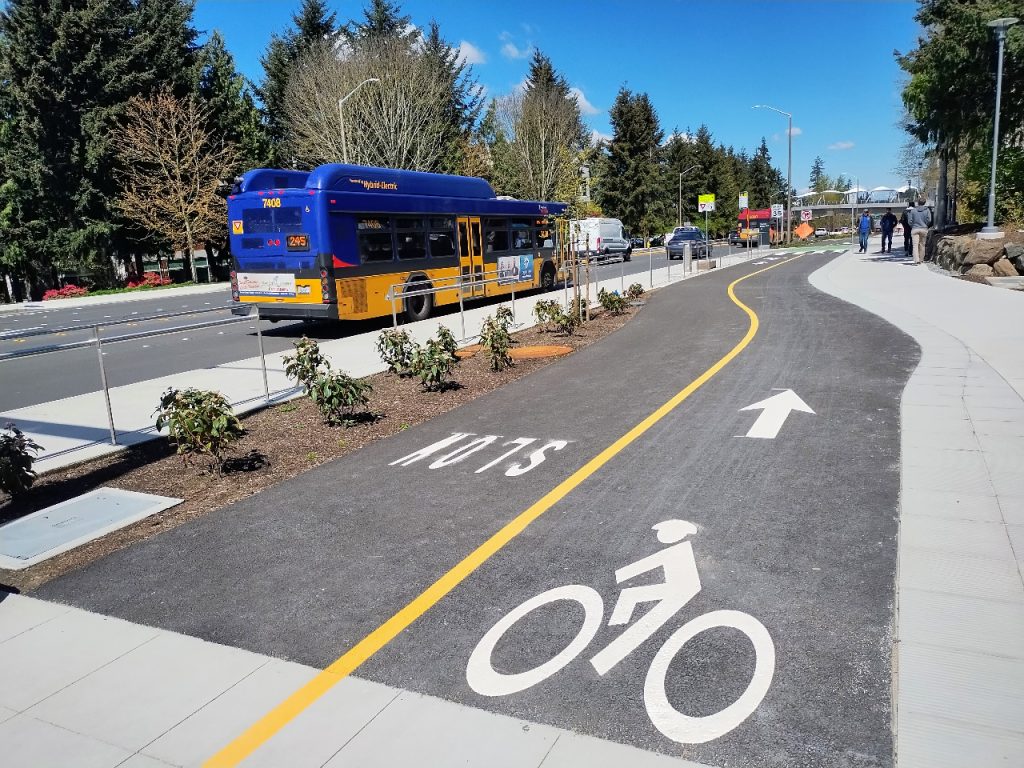
Until recently, it looked like the City of Bellevue might match that energy with rapid implementation of on-street bike facilities, but those moves have taken a big step back this spring as the Bellevue City Council ceded to pushback over potential reallocation of vehicle lanes.
In January, Redmond celebrated the opening of another smaller pedestrian bridge over SR 520 at the next stop on the 2 Line heading toward Bellevue, Overlake Village Station. That bridge was built with public dollars, with the majority of the $10.4 million cost covered by federal grants awarded to the City of Redmond.
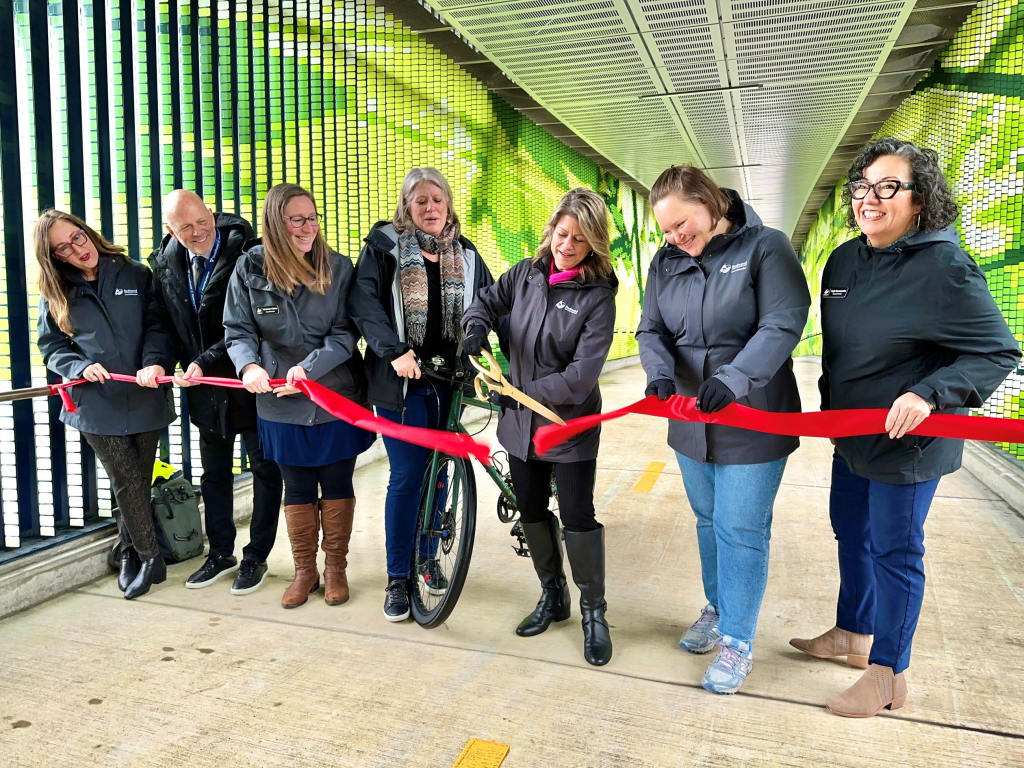
These multimodal connections are set to enable more car-free travel in a city that has been among King County’s leaders in housing production recently. Relative to population, no city is issuing housing permits faster over the past five years, with close to 5,500 units moving through the pipeline — which is close to 20% of Redmond’s existing housing stock. Plus, the opening of the 2 Line this Saturday means the city will be a more enticing destination for transit users looking to take advantage of quick trips between Bellevue and the Overlake area.
Ryan Packer lives in the Summit Slope neighborhood of Capitol Hill and has been writing for the The Urbanist since 2015. They report on multimodal transportation issues, #VisionZero, preservation, and local politics. They believe in using Seattle's history to help attain the vibrant, diverse city that we all wish to inhabit. Ryan's writing has appeared in Capitol Hill Seattle Blog, Bike Portland, and Seattle Bike Blog, where they also did a four-month stint as temporary editor.


